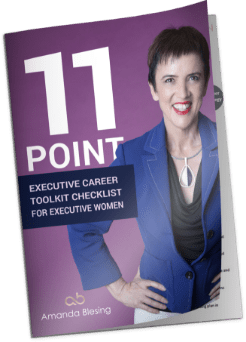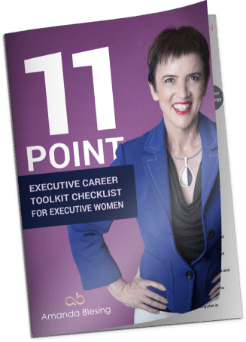Why Conference Planning Committees need to Consider Gender Diversity
In recent weeks I’ve been vaguely horrified by a range of industry conference speaker programs that were so heavily dominated by those of the middle aged masculine persuasion, that the programs could have been something from the 1950’s. “In this modern era when gender diversity seems to be the flavour of the month?” I hear you ask. Yes, in 2015. So why should those in the association world care about gender diversity?
Professional associations are often seen as the peak body for industry and are supposed to lead the way when it comes to demonstrating best practice. While I’m currently not privy to current Australian statistics in the association world in terms of percentages of women in leadership roles, or on association boards, the sector has a reputation for demonstrating better rates of gender diversity than industry and business itself. However in saying that there is definitely room for improvement as demonstrated by a recent report from the USA on non profits in general:
““ Men still hold 79% of the CEO positions for organizations with $25 million in assets or greater. A 2014 GuideStar report found that a gender pay gap exists in this industry as well. The sector is not perfect, but it is a place where women have a greater opportunity to lead.” ”
How else associations can help
Associations and industry bodies run industry conferences. These events are supposed to present cutting edge ideas, case studies worthy of emulating or avoiding as the case may be, present a pool of credible experts on the speaker program and provide opportunities for members to develop and grow. Another way that associations can lead the way is by establishing benchmarks or guiding principles for the conference planning committees around gender diversity.
When associations don’t ensure gender balance on conference programs it sends a message to those who work in industry that expert status is reserved for men. This may be the case in terms of consultants finding it easier (and more beneficial) to create time in their day to speak on conference programs but if recent reports are correct many industries are seeing a steady rise in the number of female industry consultants who could do the job equally as well. And we know from the multiple sources of research into this space that organisations with women in the leadership team perform better on range of measures including profitability, productivity, risk management, staff and customer satisfaction – so surely it’s their expertise contributing.
When association and industry conference planners do manage to provide gender balance, they are sending a message to younger generations of professionals that speaking, thought leadership and industry wide expertise are not merely the purview of men but also women – changing the state of play and challenging the status quo at the industry level.
There’s an old saying:
“If we keep on doing what we’ve always done we’ll always get what we’ve always got”
By providing opportunity, challenging and encouraging women to step up in this thought leadership arena and expert status, industry is more likely to find new ways to solve old problems that have potentially been dogging it for years.
Introducing the Male Champions of Change
Conference programs that don’t have gender balance are starting to look out of step with the times. There is growing recognition of this as an issue from large corporates and government departments, whose leaders have signed the Male Champions of Change Pledge. This group have identified that gender bias on conference programs and panel discussions is not appropriate:
““it was simply unacceptable in this day and age that many high profile conferences, events and taskforces lack gender balance, despite there being no shortage of senior, qualified women to participate. Aside from the unhelpful gender norms reinforced by the current practice, the lack of diversity clearly limits the span of conversation. Perspectives considered, insights shared and conclusions drawn will be naturally skewed towards more masculine views and restricted as a direct consequence.””
So why should conference planners and associations care about this pledge?
Signing up to become a Male Champion of Change is not an empty gesture because members of this program have committed to asking organisers whether they have secured women leaders to participate in public forums, panels and conference programs. If not, then the male leader has also committed to decline to speak until the issue has been rectified or will recommend a senior female leader to speak in his stead.
Many of the male champions may then create organisation wide policies that discourage the rest of the leadership team from participating and prohibit staff from attending events such as panels, forums and conferences where there is an obvious gender bias and lack of diversity.
There is the potential for this to become an issue for conference organisers wishing to both engage high profile speakers from big name organisations for programs and maximise attendance of delegates, unless gender diversity is addressed up front and centre. I’m sure this will soon cascade into the sponsorship dollar and event supporter values as well. Given that many in the association sector rely heavily on conference and sponsorship revenues, this could represent a problem unless addressed.
It’s not always easy unfortunately
As someone who has programmed more conferences that you can poke the proverbial stick at I’m not saying this is easy. In fact, if you read my “back story” on The Ambition Revolution you will see what I mean and I know that my own track record has not been perfect in the past.
-
For every call for papers nine men would respond and only one woman.
-
I’d tap a woman on the shoulder to ask her to speak (pre identified by a committee as someone doing interesting work in her organisation) and she would handball me to a male colleague, manager or ambitious young male staff member.
-
For every second woman who did say yes, it was as though they needed to be reassured that they were indeed the right person for the opportunity and people would indeed want to hear what she had to say.
It’s definitely a Catch 22 unfortunately and unless we do something about it soon, we’ll be caught in a loop and won’t be able to escape.
Ideas for the conference team and planning committee
I understand the pressure on conference planning teams to get the program finalised and out to market in time and on budget. Associations are frequently resource poor and also rely heavily on volunteer conference planning committees. So let’s make it easy for everyone and help educate the conference planning committee along the way by having a few practical strategies in place:
-
Set a 50:50 gender diversity target for your next conference speaker program – particularly relevant if your audience is mixed.
-
Have this target front and centre for your volunteer conference planning committee to talk about and measure themselves against during and after the event, along with evaluations and financial measures.
-
Position it as an exciting challenge (rather than more work) – encourage a problem solving approach.
-
Feature an article in your industry publication or e-newsletter on the importance or benefit of gender diversity to your particular industry.
-
Run programs that support and encourage women to speak throughout the year – not just about how they got to where they are now, but also to share expertise and technical knowledge to mixed gender audiences.
-
And yes, for the first year or so it might take a bit more work, but as the years progress it will become easier, and the norm.
Why diversity matters
The issue is much bigger than simply gender diversity. As a society we benefit from diverse ways of thinking on every issue. So don’t just stop with gender diversity.
-
Ensure you provide opportunities for young professionals – once again bringing fresh ideas, new ways of thinking and communicating as well as reinforcing the notion that fresh perspectives are worth hearing about. It also grows growing their confidence in this arena creating a “talent pipeline” for leadership development down the track helping both yourself for future conferences but also helping industry provide opportunities for young talent to shine and develop.
-
Consider also cultural diversity and opportunities for those with disabilities on conference programs as well.
-
Where are your mental blind spots when it comes to encouraging diversity on your program and how can you remedy this?
In summary
Gender diversity is a huge issue for our society and business world and it’s proving challenging to move forward with any speed. In fact Australian statistics demonstrate that the gender salary gap remains the same after 30 years and a heap of work on the issue. The topic is heavily laden with bias at best along with sexism and active discrimination at worst. It’s full of examples where turf protection wars are waged, boys clubs and “this is the way we’ve always done it” type notions abound, along with arguments such as “I only want the best person for the role” (meritocracy). It’s backed up by generations of socialisation that reinforce stereotypical gender roles for both men and women. Let’s face it, I’m sure there are times when both men and women sometimes struggle to see the woods for the trees because bias (conscious and unconscious) is so insidious and difficult to identify. While associations in general do a better job than some with their recruitment practices and encouraging female leaders, I think there is definitely room to improve when it comes to planning conferences and demonstrating best practice to industry.
Vive la révolution!
#ambitionrevolution











Fortune favours the well prepared particularly on LinkedIn
View Post